Jacob Duncan, John Goldsby, Jason Tiemann - The Innkeeper's Gun (2010)

Artist: Jacob Duncan, John Goldsby, Jason Tiemann
Title: The Innkeeper's Gun
Year Of Release: 2010
Label: Bass Lion Music
Genre: Post-Bop
Quality: FLAC (tracks+.cue,log)
Total Time: 00:55:28
Total Size: 332 MB
WebSite: Album Preview
Tracklist:Title: The Innkeeper's Gun
Year Of Release: 2010
Label: Bass Lion Music
Genre: Post-Bop
Quality: FLAC (tracks+.cue,log)
Total Time: 00:55:28
Total Size: 332 MB
WebSite: Album Preview
01. Jim Henson (Duncan) - 7:16
02. Ligeti Split (Duncan) - 6:08
03. Paparazzi (Germanotta-Fusari) - 7:51
04. More Than Something (Goldsby) - 5:19
05. The Innkeeper's Gun (Duncan) - 8:10
06. Never Come Back to Me (Goldsby) - 6:14
07. Neda (Duncan) - 8:44
08. Juan in the Basement (Goldsby) - 5:46
The Innkeeper’s Gun is a wonderful jazz trio record: both within the tradition and extending it at the same time. It features three musicians playing for the music, improvising freely on some excellent compositions. The trio have a wonderful sense of musical empathy and have previously released the hugely enjoyable Live at the Nachbar in 2008.
It is music that takes it’s inspiration from the piano-less trios of Sonny Rollins (think Way Out West) and Ornette Coleman. Each piece is distinct with its own mood and melody which is then developed in a clearly organic way. The sound of each musician is stunningly clear on the recording and the end result sounds very live – and sounds almost like you were there.
If you’re not familiar with John Goldsby by now, you should be. He is a fabulous musician and writer: one of the foremost bassists of our age. John is deeply rooted in the tradition having studied the work of hundreds of bassists. He has a particular love for the music of the Duke Ellington bassists such as Wellman Braud, Jimmy Blanton, Oscar Pettiford and Paul Chambers. John has studied with Red Mitchell (informally), with Dave Holland and others.
John’s The Jazz Bass Book is an essential read, and he has written regularly and insightfully for Bass Player magazine. He has a thorough command of the bass and uses it very musically. His “in the moment” playing has been in demand from such as: Patti Austin, Michael Brecker, Joe Lovano, Lalo Schifrin, Maceo Parker and Abdullah Ibrahim. Originally from Kentucky, John has been based in Cologne, Germany for the past sixteen years after fourteen years in New York.
The “Nachbar Trio”, as they have come to be known, also features two heavyweight musicians from the Kentucky scene: alto saxophonist Jacob Duncan and drummer Jason Tiemann. Duncan, whose fabulous compositions are featured on this record alongside tunes by Goldsby and Lady Gaga, has played or recorded with everyone from Aretha Franklin to Norah Jones; Tiemann, with the likes of James Moody, Dave Liebman and Ben Monder. But it’s their empathy, musical awareness, finely tuned listening and creative musical improvising that impresses rather then their resumes.
“Jim Henson” features a robust Mingus-like bass figure and martial snare. Duncan adds a sinuous melody with expert use of note length, phrased behind the beat. A relaxed swinging release contrasts with the march feel. The trio use a combination of a range of shifting feels (again reminding me of Mingus’ or some of Henry Threadgill’s groups – though the changes are subtler). Duncan’s alto solo is a swirling ball of energy over Goldsby’s steady lope and Tiemann’s percussive asides y before Goldby’s thematic solo further develops the piece with his tremendous tone and very musical lyricism truly making the double bass sing.
“Ligeti Split” (love the title) opens with an enthralling drum improvisation leading to the spiraling theme with it’s unisons, counterpoint and Ornette-influenced melodicism. A free rhythmic feel, though driven by a sure-footed momentum leads to some fabulous interplay. A tempo emerges, more and more explicitly. At times, Duncan’s saxophone seems gospel-toned, at others engages in brief Ayler-esque bursts of squalling and then develops a motif a la Sonny Rollins. The trio enjoy a range of tempo/feel changes from loping groove to fast swing and then Goldsby plays a lovely improvisation – slowly developing his storytelling with spinning figures and great use of space and motif development. The sound of his bass closely resembles they idealized sound of double bass in my imagination. Tiemann interacts and adds constantly, developing textures as he plays.
“Paparazzi” is the Lady Gaga tune of that name. It was inspired after John heard the extravagantly costumed one sing a version accompanied by only her own piano. Stripped of all the europop production glitz, it was possible to recognize a decent tune well performed, and indeed the melody works incredibly well in the bassist’s arrangement here. Over a reggae influenced lilt, Duncan plays the melody like he means it, all bounce, expression and rhythmic placement – a masterclass in nuance. Goldsby plays a marvelous, grooving solo, exploring and developing the possibilities of the piece, letting the music develop organically.
There is a huge depth to Goldsby and Tiemann’s laid back swing here and under Duncan’s magical solo – developing the melody into his own flight into the unknown, ululating wildly at times and conjuring late period Coltrane sermonizing as the trio tumble into a tumultuous swing feel. There is time for Tiemann to plays a brief creative solo before the return of the theme. This is the most impressive jazz take I’ve heard on a contemporary pop song since Vijay Iyer’s “Galang”.
“More Than Something” has a jazz standard/tin pan alley type melody and structure whose performance nods to Sonny Rollins’ great piano-less trios. It begins with an atmospheric folk-like rubato arco bass and saxophone introduction. When the main melody comes in we are listening not to head plus accompaniment but an organic trio playing together swapping roles, engaged in simultaneous improvisation and effective counterpoint on the effecting melody. This is a development of the Bill Evans, Scott La Faro, Paul Motian trio approach.
Lee Konitz (one of Duncan’s stated influences) has a concept that the band has explored: “No-one is soloing” – meaning that the focus should be on the music rather than the individual; the music should develop rather than just consist of one solo leading to another. It is very difficult to write a review that conveys this organic development but this piece typifies it with its constant shifting of focus between the three instruments and its collective improvisation.
“The Innkeeper’s Gun” begins with a tight “drum ‘n’ bass”-influenced drum groove with saxophone and bass adding comparatively slow motion lines – a pendulum like bass figure and intensive, plaintive alto tones. The piece develops conversationally with the three improvising together freely and symbiotically as first Duncan leads, then Goldsby with a solo statement with its own sense architecture, then Tiemann’s intense, dramatic solo drums.
“Never Come Back to Me” features Bird-like alto from Duncan at times, an object lesson in creative jazz drumming from Tiemann and Goldsby’s walking bass – all momentum and surefooted intensity. As the piece approaches bop, it also frees the players, especially Tiemann’s drums (kaleidoscopic in their ever-changing commentary) to let the music express itself. Goldsby’s bowed bass solo (in it’s way a development of Paul Chambers’ hornlike arco solos) is as much a delight as his walking; and Duncan proves again what a fabulous saxophonist he is – both in the tradition and beyond.
“Neda” is Duncan’s ballad tribute to Neda Agha-Soltan, the student murdered during protests against the oppressive current Iranian regime; she became a symbol of resistance and hope for freedom loving Iranians. It’s an intense piece of music, as you might expect. Bass and drums weave around a smoldering alto melody – mournful but also resolute. Duncan builds from slow phrases to passionate, spiraling lines. Tiemann’s colorful drumming is ever-shifting but helps develop huge momentum and Goldsby’s accompaniment is profound. The bass solo that follows (with excellent percussive drumming accompaniment) is deep-toned, lyrical and poignant. The track ends with a repeated figure over which the drums tumble… justice will prevail.
“Juan in the Basement” is a playful romp, a montuno-like Afro-Cuban rhythm in 15/4. It’s a hummable, carefree tune that may soon have you dancing round the room – or at least nodding your head to the groove as the alto saxophone dances joyfully over the gorgeous, loping bass and drums groove. Goldsby’s grooving bass solo is delightful as Tiemann simultaneously improvises on the kit.
A very fine record then. There is a finely tuned interplay between the three musicians, fabulous improvising, a great set of compositions and the music is quite beautifully recorded. It’s a record that puts the music in the centre. I would suggest you get hold of a copy as soon as possible.
-- Phil Wain
It is music that takes it’s inspiration from the piano-less trios of Sonny Rollins (think Way Out West) and Ornette Coleman. Each piece is distinct with its own mood and melody which is then developed in a clearly organic way. The sound of each musician is stunningly clear on the recording and the end result sounds very live – and sounds almost like you were there.
If you’re not familiar with John Goldsby by now, you should be. He is a fabulous musician and writer: one of the foremost bassists of our age. John is deeply rooted in the tradition having studied the work of hundreds of bassists. He has a particular love for the music of the Duke Ellington bassists such as Wellman Braud, Jimmy Blanton, Oscar Pettiford and Paul Chambers. John has studied with Red Mitchell (informally), with Dave Holland and others.
John’s The Jazz Bass Book is an essential read, and he has written regularly and insightfully for Bass Player magazine. He has a thorough command of the bass and uses it very musically. His “in the moment” playing has been in demand from such as: Patti Austin, Michael Brecker, Joe Lovano, Lalo Schifrin, Maceo Parker and Abdullah Ibrahim. Originally from Kentucky, John has been based in Cologne, Germany for the past sixteen years after fourteen years in New York.
The “Nachbar Trio”, as they have come to be known, also features two heavyweight musicians from the Kentucky scene: alto saxophonist Jacob Duncan and drummer Jason Tiemann. Duncan, whose fabulous compositions are featured on this record alongside tunes by Goldsby and Lady Gaga, has played or recorded with everyone from Aretha Franklin to Norah Jones; Tiemann, with the likes of James Moody, Dave Liebman and Ben Monder. But it’s their empathy, musical awareness, finely tuned listening and creative musical improvising that impresses rather then their resumes.
“Jim Henson” features a robust Mingus-like bass figure and martial snare. Duncan adds a sinuous melody with expert use of note length, phrased behind the beat. A relaxed swinging release contrasts with the march feel. The trio use a combination of a range of shifting feels (again reminding me of Mingus’ or some of Henry Threadgill’s groups – though the changes are subtler). Duncan’s alto solo is a swirling ball of energy over Goldsby’s steady lope and Tiemann’s percussive asides y before Goldby’s thematic solo further develops the piece with his tremendous tone and very musical lyricism truly making the double bass sing.
“Ligeti Split” (love the title) opens with an enthralling drum improvisation leading to the spiraling theme with it’s unisons, counterpoint and Ornette-influenced melodicism. A free rhythmic feel, though driven by a sure-footed momentum leads to some fabulous interplay. A tempo emerges, more and more explicitly. At times, Duncan’s saxophone seems gospel-toned, at others engages in brief Ayler-esque bursts of squalling and then develops a motif a la Sonny Rollins. The trio enjoy a range of tempo/feel changes from loping groove to fast swing and then Goldsby plays a lovely improvisation – slowly developing his storytelling with spinning figures and great use of space and motif development. The sound of his bass closely resembles they idealized sound of double bass in my imagination. Tiemann interacts and adds constantly, developing textures as he plays.
“Paparazzi” is the Lady Gaga tune of that name. It was inspired after John heard the extravagantly costumed one sing a version accompanied by only her own piano. Stripped of all the europop production glitz, it was possible to recognize a decent tune well performed, and indeed the melody works incredibly well in the bassist’s arrangement here. Over a reggae influenced lilt, Duncan plays the melody like he means it, all bounce, expression and rhythmic placement – a masterclass in nuance. Goldsby plays a marvelous, grooving solo, exploring and developing the possibilities of the piece, letting the music develop organically.
There is a huge depth to Goldsby and Tiemann’s laid back swing here and under Duncan’s magical solo – developing the melody into his own flight into the unknown, ululating wildly at times and conjuring late period Coltrane sermonizing as the trio tumble into a tumultuous swing feel. There is time for Tiemann to plays a brief creative solo before the return of the theme. This is the most impressive jazz take I’ve heard on a contemporary pop song since Vijay Iyer’s “Galang”.
“More Than Something” has a jazz standard/tin pan alley type melody and structure whose performance nods to Sonny Rollins’ great piano-less trios. It begins with an atmospheric folk-like rubato arco bass and saxophone introduction. When the main melody comes in we are listening not to head plus accompaniment but an organic trio playing together swapping roles, engaged in simultaneous improvisation and effective counterpoint on the effecting melody. This is a development of the Bill Evans, Scott La Faro, Paul Motian trio approach.
Lee Konitz (one of Duncan’s stated influences) has a concept that the band has explored: “No-one is soloing” – meaning that the focus should be on the music rather than the individual; the music should develop rather than just consist of one solo leading to another. It is very difficult to write a review that conveys this organic development but this piece typifies it with its constant shifting of focus between the three instruments and its collective improvisation.
“The Innkeeper’s Gun” begins with a tight “drum ‘n’ bass”-influenced drum groove with saxophone and bass adding comparatively slow motion lines – a pendulum like bass figure and intensive, plaintive alto tones. The piece develops conversationally with the three improvising together freely and symbiotically as first Duncan leads, then Goldsby with a solo statement with its own sense architecture, then Tiemann’s intense, dramatic solo drums.
“Never Come Back to Me” features Bird-like alto from Duncan at times, an object lesson in creative jazz drumming from Tiemann and Goldsby’s walking bass – all momentum and surefooted intensity. As the piece approaches bop, it also frees the players, especially Tiemann’s drums (kaleidoscopic in their ever-changing commentary) to let the music express itself. Goldsby’s bowed bass solo (in it’s way a development of Paul Chambers’ hornlike arco solos) is as much a delight as his walking; and Duncan proves again what a fabulous saxophonist he is – both in the tradition and beyond.
“Neda” is Duncan’s ballad tribute to Neda Agha-Soltan, the student murdered during protests against the oppressive current Iranian regime; she became a symbol of resistance and hope for freedom loving Iranians. It’s an intense piece of music, as you might expect. Bass and drums weave around a smoldering alto melody – mournful but also resolute. Duncan builds from slow phrases to passionate, spiraling lines. Tiemann’s colorful drumming is ever-shifting but helps develop huge momentum and Goldsby’s accompaniment is profound. The bass solo that follows (with excellent percussive drumming accompaniment) is deep-toned, lyrical and poignant. The track ends with a repeated figure over which the drums tumble… justice will prevail.
“Juan in the Basement” is a playful romp, a montuno-like Afro-Cuban rhythm in 15/4. It’s a hummable, carefree tune that may soon have you dancing round the room – or at least nodding your head to the groove as the alto saxophone dances joyfully over the gorgeous, loping bass and drums groove. Goldsby’s grooving bass solo is delightful as Tiemann simultaneously improvises on the kit.
A very fine record then. There is a finely tuned interplay between the three musicians, fabulous improvising, a great set of compositions and the music is quite beautifully recorded. It’s a record that puts the music in the centre. I would suggest you get hold of a copy as soon as possible.
-- Phil Wain
Download Link Isra.Cloud
Jacob Duncan, John Goldsby, Jason Tiemann - The Innkeeper's Gun (2010)
My blog
Jacob Duncan, John Goldsby, Jason Tiemann - The Innkeeper's Gun (2010)
My blog
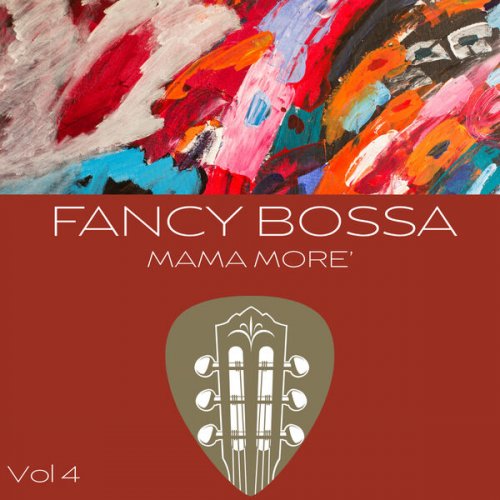
![Wadada Leo Smith - Divine Love (1979/2025) [Hi-Res] Wadada Leo Smith - Divine Love (1979/2025) [Hi-Res]](https://www.dibpic.com/uploads/posts/2025-12/1765802240_cover.jpg)
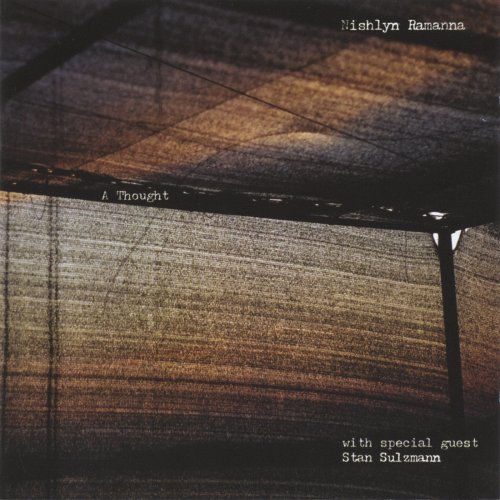
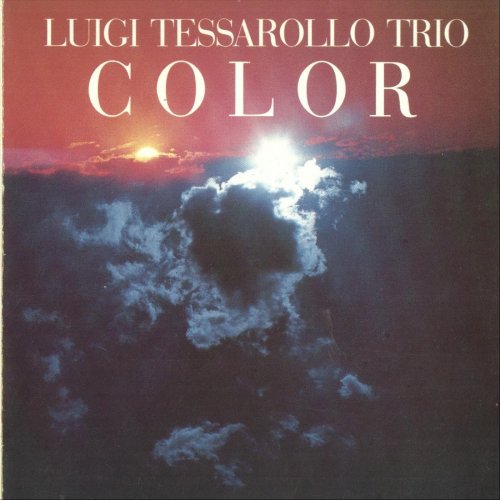
![Amira Kheir - Black Diamonds (2025) [Hi-Res] Amira Kheir - Black Diamonds (2025) [Hi-Res]](https://www.dibpic.com/uploads/posts/2025-12/1765640459_tf7wrmc9lqmqc_600.jpg)
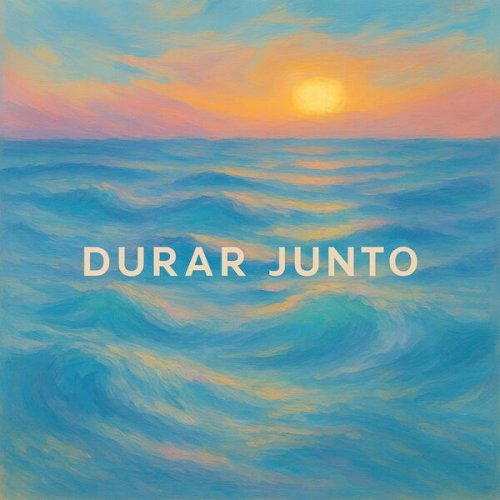
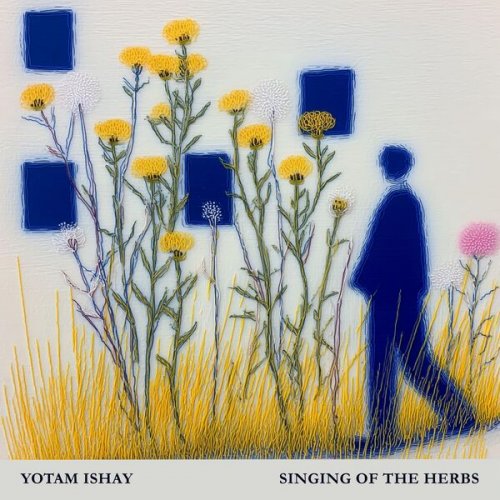
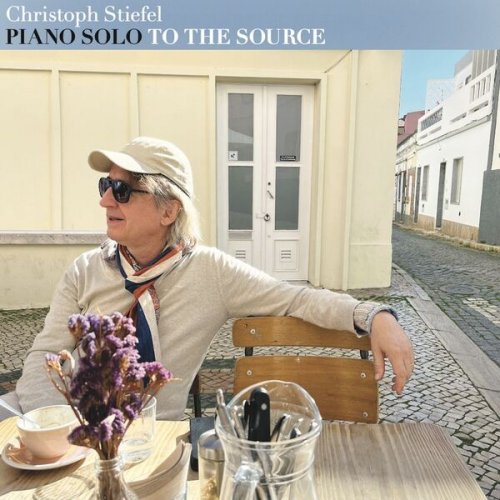
![Tomasz Stańko - Zamek mgieł (Polish Radio Sessions vol. 3/6) (2025) [Hi-Res] Tomasz Stańko - Zamek mgieł (Polish Radio Sessions vol. 3/6) (2025) [Hi-Res]](https://www.dibpic.com/uploads/posts/2025-12/1765795906_cover.jpg)